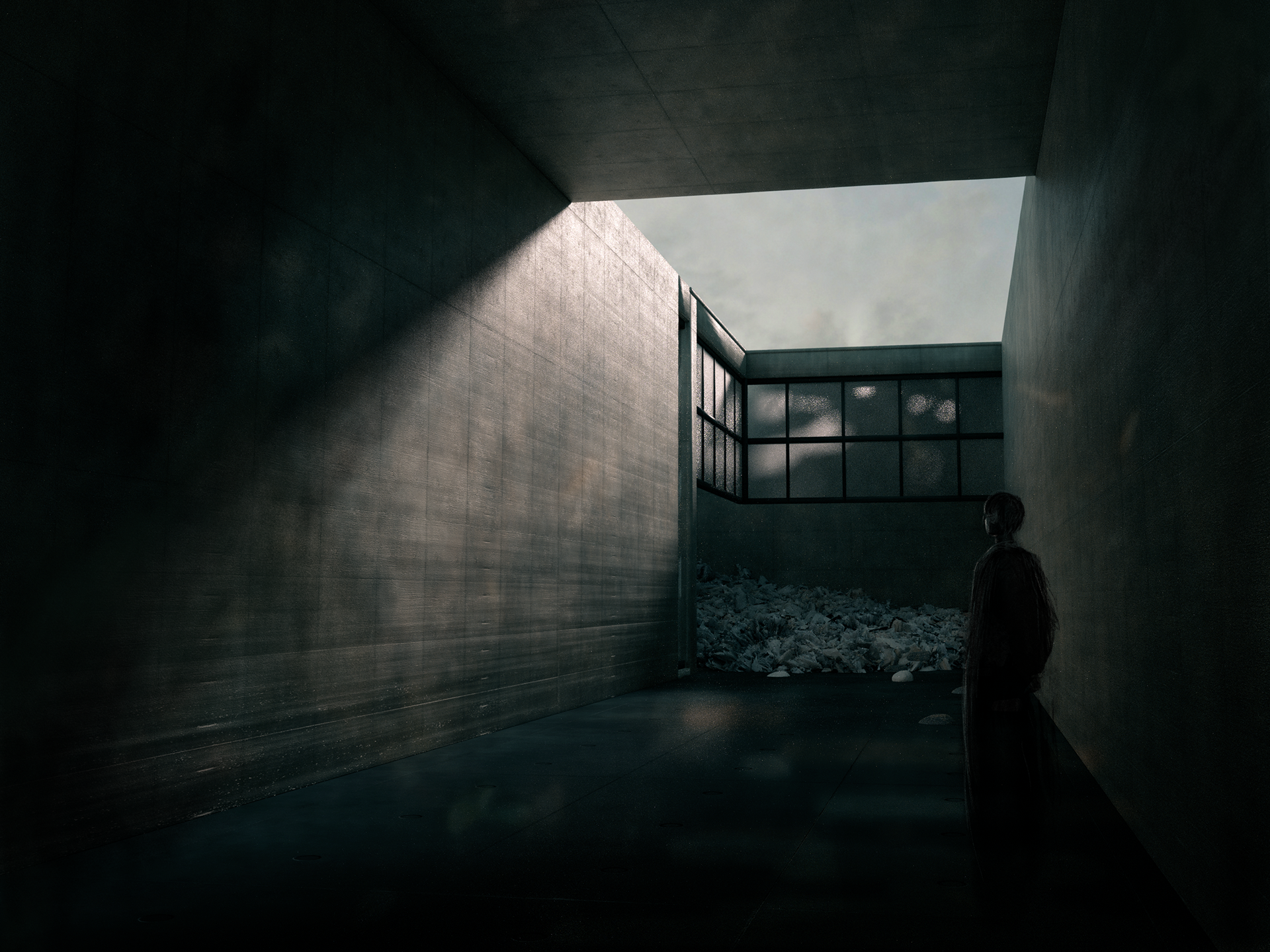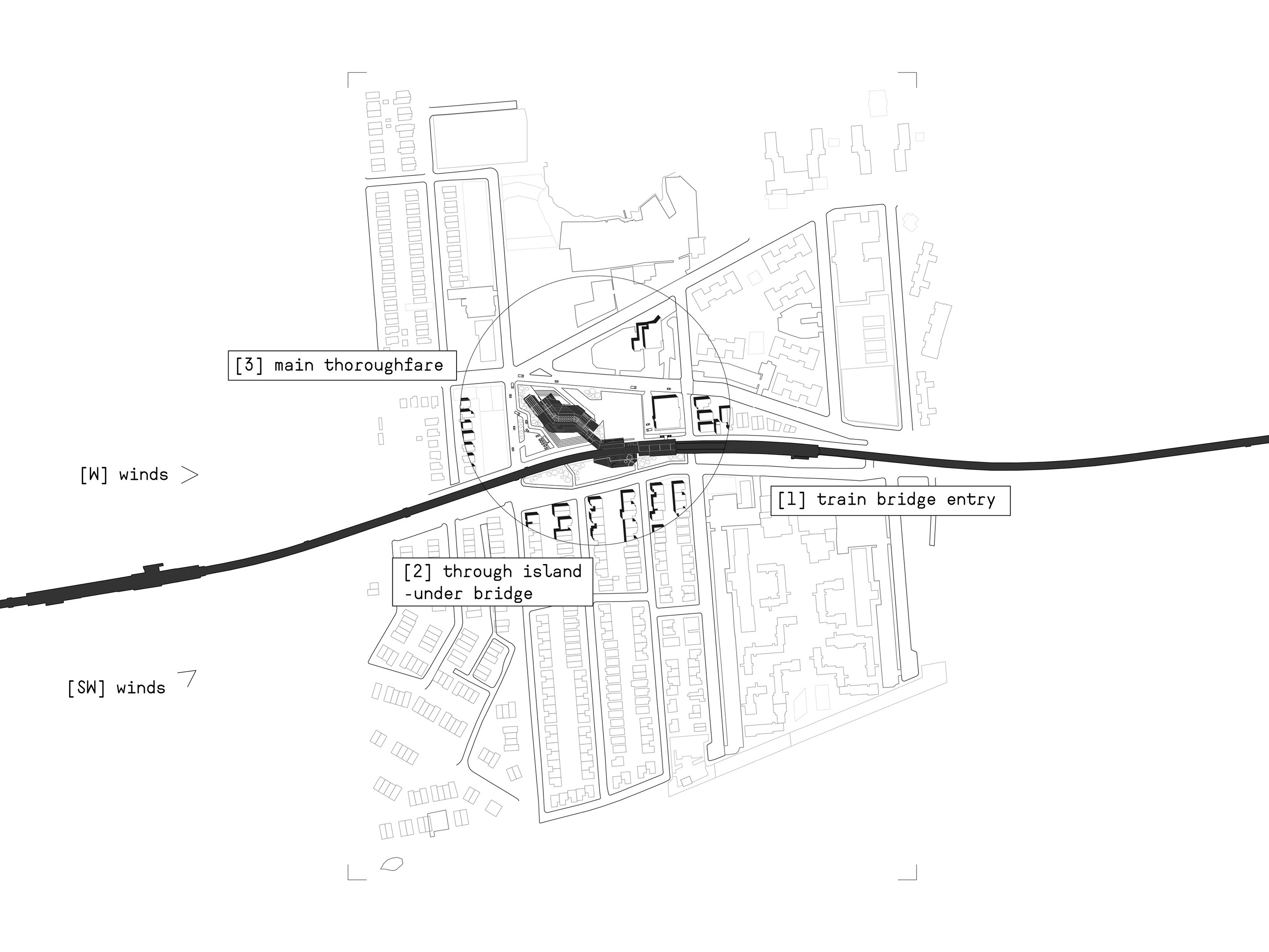Liquid Memories
These conceptual relics extract and subvert expectations of tension and compression through a method of framing, casting, and pressurizing. This produced bespoke relics whose surfaces appear soft and flesh-like though they are made out of hard materials and a negative for asymmetrical vaulting
Process The initial inquiry was to explore ideas of tension and compression by tensioning lightweight malleable fabrics to a fixed frame to cast into. Thus subverting both methods of modeling by exerting gravitational forces onto a tensioned system meant to appear as if it floats in the air and casting a usually brutal material into a light fabric container.
Nylon socks were tied by the ends to a wooden 24”x24” frame (Figure 2.4), then cast into with thicker plaster (Figure 2.5) , because of plaster’s quick cure time, usually following a 3:4 water-to-plaster ratio. The plaster needed to be thicker than normal mixtures because of the porosity of the fabric. Variables were then found in the pressurization of rubber bands onto the cast producing prominent soft swelling, objects that were put into the nylon and pressurized onto such as foam blocks and basswood tetrahedrons. The resultant bespoke relics were formally chaotic and visually soft with a high resolution coming from the impression of the nylon fabric container the material was cast into.
The resultant relics, because of the chaotic nature that stemmed from the process, lacked a degree of order or geometric control. They were asymmetrical and had no clear pattern of pressurization. While the relics were visually uncanny because of the subversive nature of the process that created them, speculation as to whether the objects would prove to be even stranger by giving them order was done through digital collage studies (Figure 2.6). Aggregating the relics and making them symmetrical evoked the visual ambiguity of Rorschach tests and set up the ambition to achieve symmetry through a process that fundamentally resulted in asymmetry and disorder.
Something to note from these studies was the evocative nature of how the objects were perceived. Because of the subversive modeling processes that created them, when showing them to faculty or peers, multiple different, strange readings were received. While the visual connection to Rorschach tests was obvious, as they were shown to more people, the way in which others perceive and project themselves onto the reading of these objects became something for us to consider as the authors of these objects. The relics provoke a strange sense of existing reference as well as the unsettling unknown. Thus as an ambiguous object does, it requires one’s subconscious to fill in the gaps and assess how to perceive this object.
As the process progressed, work to create the symmetrical relic was done by changing the casted material to concrete. One test involved achieving symmetry in the pressurization pattern on the object’s surface which concrete proved successful for its longer cure time, allowing for more careful calibration of rubber band pressurization. The frame also came into investigation and was reinvented with acrylic panels etched with a grid system and holes at the intersection points to tie the string to. The points on the x and y axis were labeled, adding to the conditions for variation.
The process then concerned itself with the reproduction of the objects outside of the casting. To bring out potential spatial value, shells were made of the relics. This was initially done through a process of reverse casting where the nylon was set up in the frame for a regular cast but instead of casting into the fabric, the plaster was painted onto the surface in multiple layers then had the fabric and basswood tetrahedron removed internally. This proved to be successful but lost the pressurization and form from the initial models leading the studies to vacuum forming with plastic sheets. This method produced a shell with a slight resolution change which became a point of interest. The resolution change was pushed further by taking the vacuum form and slush casting into it, a method for casting shells done by pouring a small amount of plaster into a container and rotating it until the thin membrane completely cures.
Nylon socks were tied by the ends to a wooden 24”x24” frame (Figure 2.4), then cast into with thicker plaster (Figure 2.5) , because of plaster’s quick cure time, usually following a 3:4 water-to-plaster ratio. The plaster needed to be thicker than normal mixtures because of the porosity of the fabric. Variables were then found in the pressurization of rubber bands onto the cast producing prominent soft swelling, objects that were put into the nylon and pressurized onto such as foam blocks and basswood tetrahedrons. The resultant bespoke relics were formally chaotic and visually soft with a high resolution coming from the impression of the nylon fabric container the material was cast into.
The resultant relics, because of the chaotic nature that stemmed from the process, lacked a degree of order or geometric control. They were asymmetrical and had no clear pattern of pressurization. While the relics were visually uncanny because of the subversive nature of the process that created them, speculation as to whether the objects would prove to be even stranger by giving them order was done through digital collage studies (Figure 2.6). Aggregating the relics and making them symmetrical evoked the visual ambiguity of Rorschach tests and set up the ambition to achieve symmetry through a process that fundamentally resulted in asymmetry and disorder.
Something to note from these studies was the evocative nature of how the objects were perceived. Because of the subversive modeling processes that created them, when showing them to faculty or peers, multiple different, strange readings were received. While the visual connection to Rorschach tests was obvious, as they were shown to more people, the way in which others perceive and project themselves onto the reading of these objects became something for us to consider as the authors of these objects. The relics provoke a strange sense of existing reference as well as the unsettling unknown. Thus as an ambiguous object does, it requires one’s subconscious to fill in the gaps and assess how to perceive this object.
As the process progressed, work to create the symmetrical relic was done by changing the casted material to concrete. One test involved achieving symmetry in the pressurization pattern on the object’s surface which concrete proved successful for its longer cure time, allowing for more careful calibration of rubber band pressurization. The frame also came into investigation and was reinvented with acrylic panels etched with a grid system and holes at the intersection points to tie the string to. The points on the x and y axis were labeled, adding to the conditions for variation.
The process then concerned itself with the reproduction of the objects outside of the casting. To bring out potential spatial value, shells were made of the relics. This was initially done through a process of reverse casting where the nylon was set up in the frame for a regular cast but instead of casting into the fabric, the plaster was painted onto the surface in multiple layers then had the fabric and basswood tetrahedron removed internally. This proved to be successful but lost the pressurization and form from the initial models leading the studies to vacuum forming with plastic sheets. This method produced a shell with a slight resolution change which became a point of interest. The resolution change was pushed further by taking the vacuum form and slush casting into it, a method for casting shells done by pouring a small amount of plaster into a container and rotating it until the thin membrane completely cures.
The resulting relics created a language of softness, formal expression, and emphasis on liquid material properties. The softness resulted from various parts of the process such as the influence of the lightweight fabric container the liquid material was cast into, the pressurization which accentuated the softness, and the impression the fabric left on the surface of the object. Mark West, an architectural researcher of fabric formwork says “Since ancient Rome, concrete has been cast in rigid molds. Casting concrete in light, flexible, fabric containers utterly transforms concrete from the brutal and rigid material we have come to know, into a sensual and sensitive material, alive to its original wetness and plasticity”
Also transformed to create design elements that are unique to our project. Such as in the rib cage of our transformed cathedral skeleton.
In design, [see asacred] we aimed to take the skeleton of the cathedral (structural elements) and proportions to create a unifying armature that is not made up of different parts like the buttresses, columns, and vaults of the traditional cathedral but one repeatable spatial element. Thus creating something we call a super bay.
This was done by aiming to extract the interiority of the objects we produced by creating a negative, transforming the negative, and applying it to the cathedral’s proportions according to its structural skeleton.
We used these formwork studies to develop a language of softness and skeletons. Resulting in forms that evoke the uncanny and refer back to the anthropomorphic, anatomical qualities of cathedrals
Also transformed to create design elements that are unique to our project. Such as in the rib cage of our transformed cathedral skeleton.
In design, [see asacred] we aimed to take the skeleton of the cathedral (structural elements) and proportions to create a unifying armature that is not made up of different parts like the buttresses, columns, and vaults of the traditional cathedral but one repeatable spatial element. Thus creating something we call a super bay.
This was done by aiming to extract the interiority of the objects we produced by creating a negative, transforming the negative, and applying it to the cathedral’s proportions according to its structural skeleton.
We used these formwork studies to develop a language of softness and skeletons. Resulting in forms that evoke the uncanny and refer back to the anthropomorphic, anatomical qualities of cathedrals



















